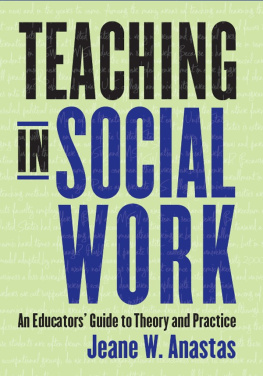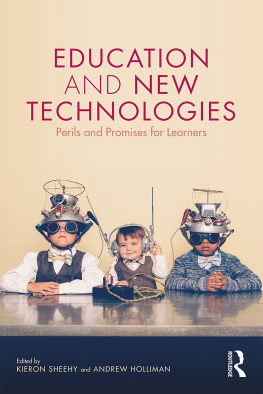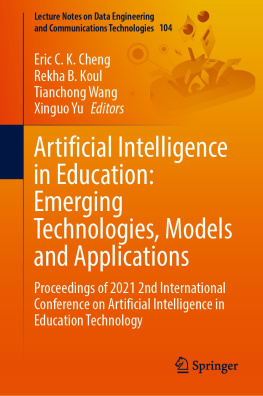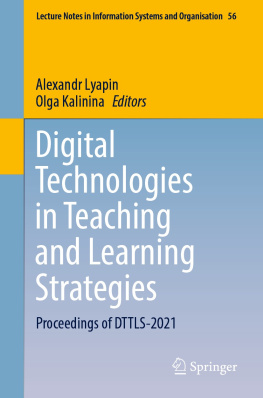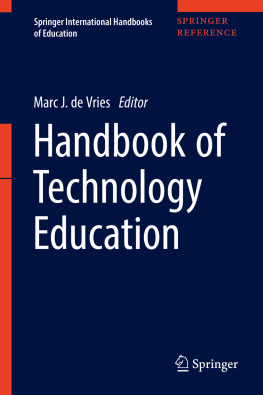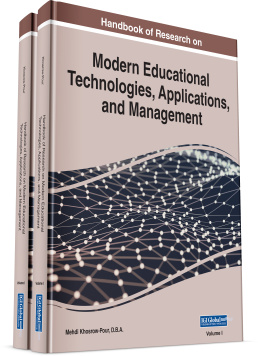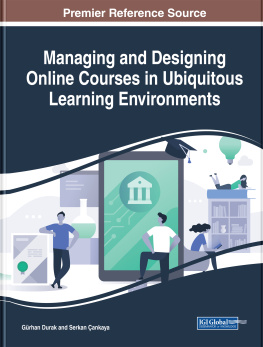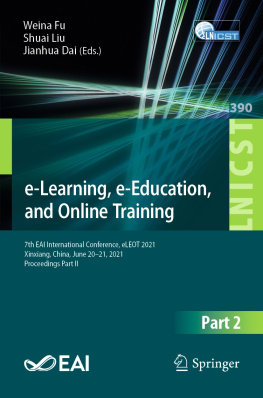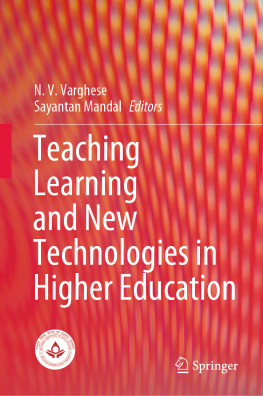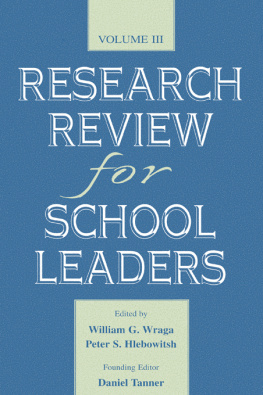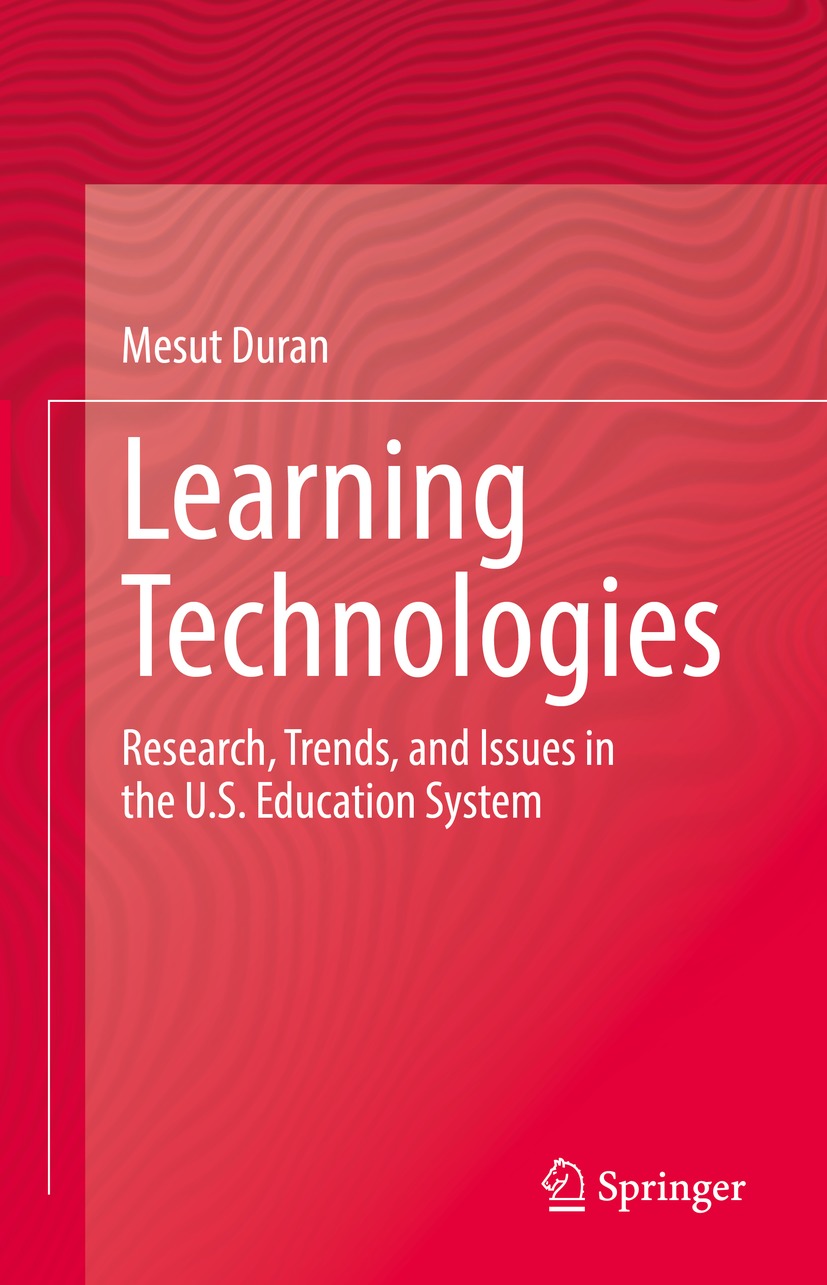Mesut Duran
Learning Technologies
Research, Trends, and Issues in the U.S. Education System

The Springer logo.
Mesut Duran
University of MichiganDearborn, DEARBORN, MI, USA
ISBN 978-3-031-18110-8 e-ISBN 978-3-031-18111-5
https://doi.org/10.1007/978-3-031-18111-5
The Editor(s) (if applicable) and The Author(s), under exclusive license to Springer Nature Switzerland AG 2022
This work is subject to copyright. All rights are solely and exclusively licensed by the Publisher, whether the whole or part of the material is concerned, specifically the rights of translation, reprinting, reuse of illustrations, recitation, broadcasting, reproduction on microfilms or in any other physical way, and transmission or information storage and retrieval, electronic adaptation, computer software, or by similar or dissimilar methodology now known or hereafter developed.
The use of general descriptive names, registered names, trademarks, service marks, etc. in this publication does not imply, even in the absence of a specific statement, that such names are exempt from the relevant protective laws and regulations and therefore free for general use.
The publisher, the authors, and the editors are safe to assume that the advice and information in this book are believed to be true and accurate at the date of publication. Neither the publisher nor the authors or the editors give a warranty, expressed or implied, with respect to the material contained herein or for any errors or omissions that may have been made. The publisher remains neutral with regard to jurisdictional claims in published maps and institutional affiliations.
This Springer imprint is published by the registered company Springer Nature Switzerland AG
The registered company address is: Gewerbestrasse 11, 6330 Cham, Switzerland
To the students, teachers, faculty, and education leaders dedicated to understanding and applying effective learning technologies in education.
To my father and first grade teacher, Kemal Duran, who passed away on March 31, 2022, during the last stage of writing this book. Rest in peace, dad! Rabbim rahmetiyle muamele eylesin, mekann cennet olsun inallah.
To my family: my wife Nurcan, my daughters Sena and Dua, and my son Kemal for their endless support and encouragement I received throughout the writing process. Thanks, Babas canlar! Special thanks to Sena for reading the manuscript and providing editorial suggestions.
To my editor, Melissa James, and the project coordinator, Sowmya Thodur, for guiding me throughout the publication process.
Preface
Digital technology resources such as computers, mobile devices, educational apps, the World Wide Web, and broadband Internet are readily available for educational use. The literature includes multiple terms to describe digital technology use in education. For instance, learning technologies , educational technology, instructional technology, and information communication technology (ICT) are among them. Even though there might be some nuances in details, these terms are used interchangeably for the present book, describing digital technology applications to enhance teaching, learning, and creative inquiry.
A prevailing expectation of contemporary education in the USA is that digital technologies should enrich the nations schools. Yet, the rapid rate and pace of technological advancement in education have been highly debated. Moreover, given the remote learning challenges and opportunities that the COVID-19 pandemic has recently brought to the worlds attention, interest in educational technology discussion is at its peak.
Addressing a comprehensive list of topics and issues, the author of the present book aims to contribute to the discussion and provide guidance to educators, education leaders, researchers, and policy makers, as they navigate school technology initiatives. Commonly, schools have considered particular components of technology enterprise but have not regarded them as part of a more comprehensive, interconnected system. This oversight limits the ability to address pressing technology issues. Therefore, it is vital to understand various components and how they interact within a more extensive systema learning technology ecosystem .
In particular, with a historical context covering the past 20 years, the book addresses the research, trends, and issues related to learning technologies in (a) K-12 schools, (b) higher education , and (c) educational administration in the US education system . It is important to note that the US education system is highly decentralized, and policies and practices may vary in different states and school districts. Therefore, the discussions presented in this book address general patterns of educational technology practices.
Three primary resources guided the discussions in the book. First is an extensive literature review related to the books central focus learning technologies in the US education system . Second, the authors discussion informs the books content on over 20 years of professional teaching, research, and scholarship experiences on educational technology at a major US research university. And third, the viewpoints and comments of students in the graduate-level educational technology courses that the author regularly teaches and collects data from present the vital viewpoint of practicing teachers and educational leaders regarding how learning technologies affect their schools and their work.
The present book consists of 11 different but interrelated chapters. In the introductory chapter (Chap. ), the author first describes the books purpose around the central themeresearch, trends, and issues related to learning technologies in the US education system . The author next provides an overview of the education system in the USA, which gives the context for the discussions presented in the book. Finally, the chapter ends by describing the organization of the book.
After the introduction, the book presents a wide range of developments in learning technologies impacting K-12 education in the USA. This section first provides a theoretical and historical perspective on technology integration (Chap. ) as an umbrella topic for the K-12 area recaps earlier discussions and adds new dimensions.
Following the discussion on K-12 education, the focus moves to the higher education sector, addressing various learning technologies and related developments in post-secondary institutions (Chap. ). This section first describes US universities common learning technology practices, including classroom technology, blended learning, online instruction, and massive open online courses (MOOCs). Next, the chapter discusses technology integration into teacher-preparation programs. Subsequently, the chapter addresses emerging technologies in higher education . Then, the author writes about the current trends and developments in higher education as they impact technology initiatives. Finally, writing in this particular chapter ends with discussions on critical issues related to higher education learning technology practices and their implications for policy and practice.
In the final section, the book presents the research, trends, and issues related to technology for administrators and educational leaders as they guide digital age learning (Chap. ). Within this context, the writing first focuses on effective technology leadership practices such as establishing a vision and strategic planning for learning technologies , creating digital age learning cultures, promoting continuous improvement and professional growth, building systematic improvements, and promoting equity, inclusion, and digital citizenship . The chapter then discusses current trends and issues in guiding digital age learning and the challenges school administrators have recently faced with the surge of COVID-19.


